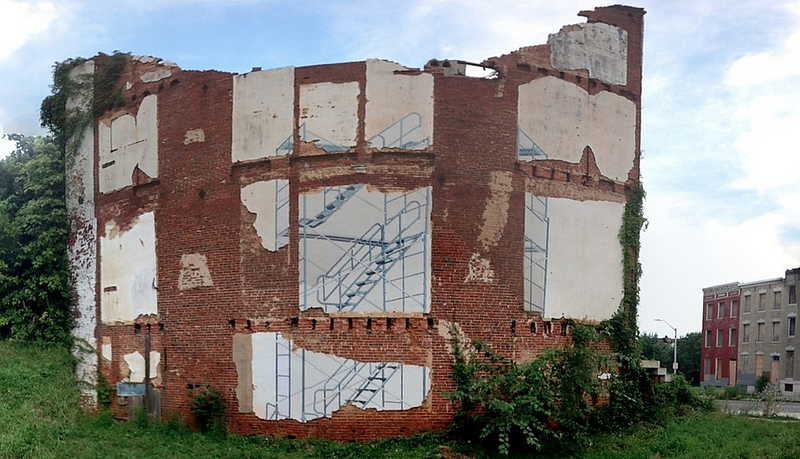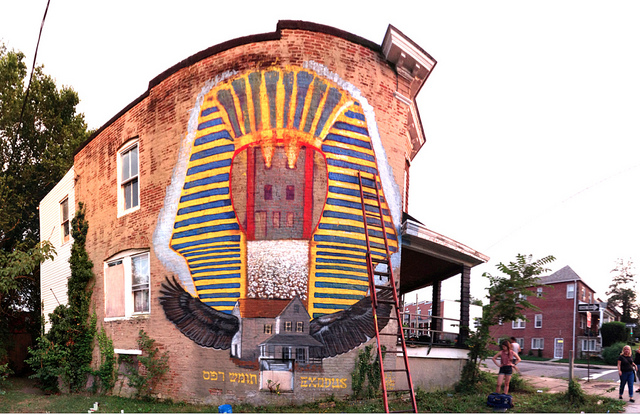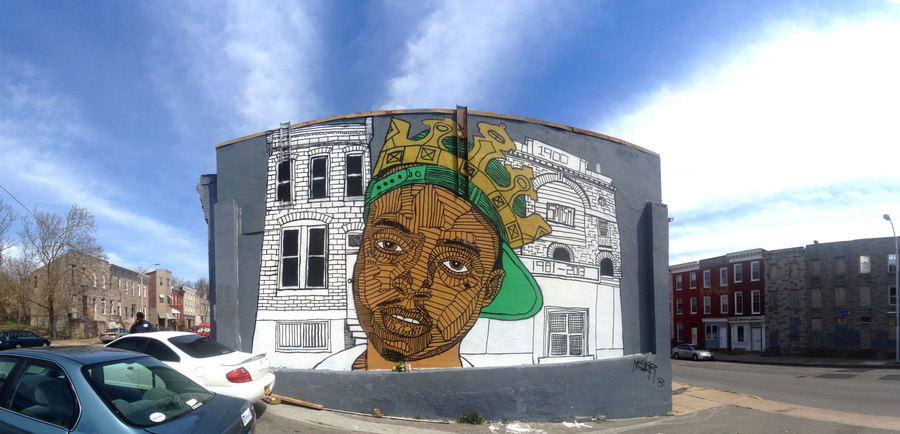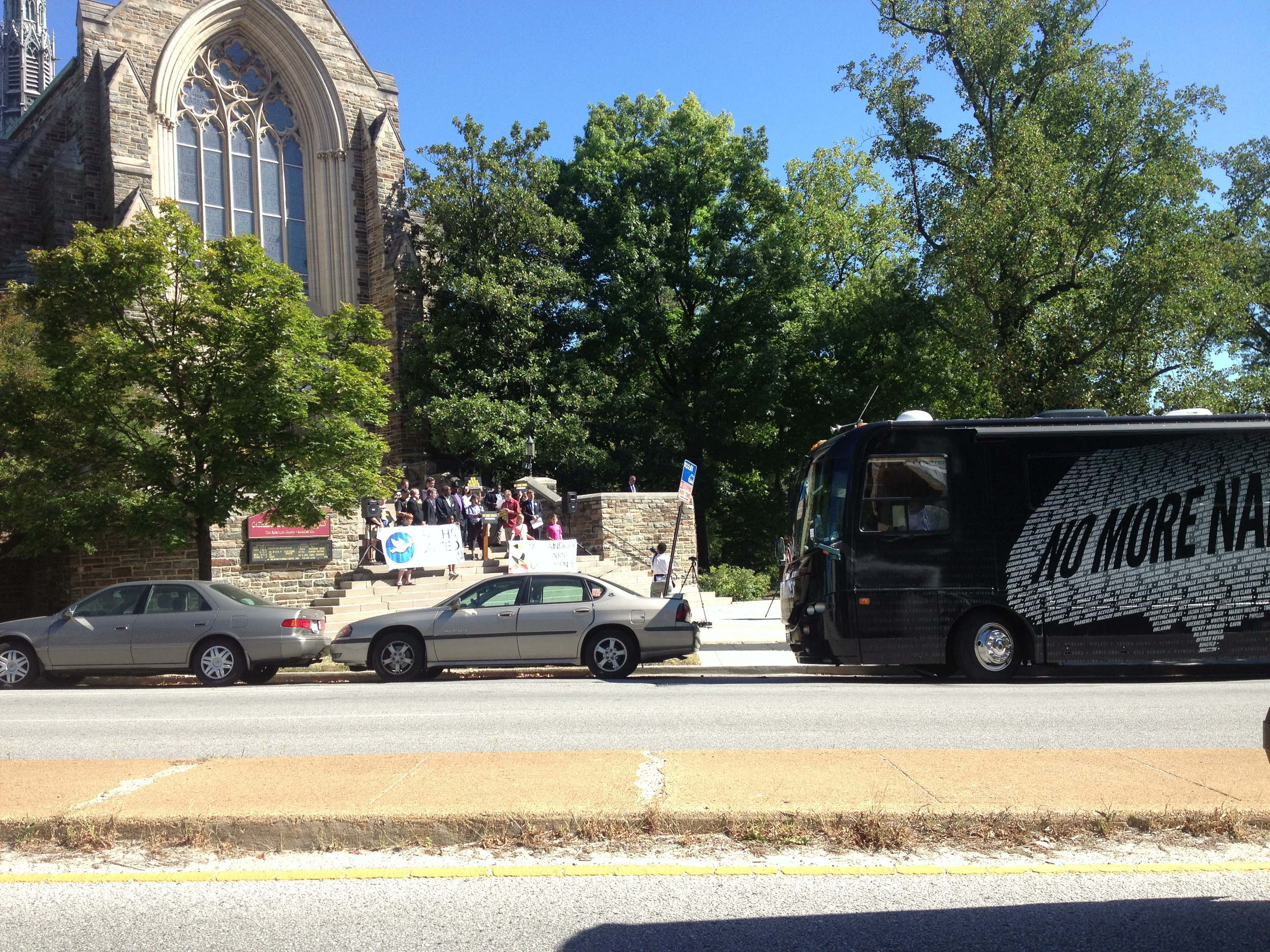Wall Hunters
This past week, City Paper published a front-page article, Urban Artillery , profiling the Wall Hunters, a group of activists and artists who use wheat-paste posters to shame slumlords into cleaning up derelict properties in Baltimore. Both Wall Hunters and Baltimore Slumlord Watch have been getting a lot of press lately, even cropping up in the Baltimore Sun. Press is just what they're after, and they are bringing a lot of ruckus to an already raucous conversation about vacant housing in the city.
A Wall Hunters image by Specter.
The Wall Hunter project is an alliance of artists, organized by a street artist named Nether, paired up with the author of Baltimore Slumlord Watch, Carol Ott. The artists paper vacants with murals, and Ott researches the property records, unknotting the complex chains of ownership behind each boarded-up building. That information is embedded in a QR code and posted in the corner of the murals, directing the public to the faces behind the properties. Shame and anger seem to be the Hunter's most potent weapons, hoping a dose of public embarrassment might spur some action.
Gaia's controversial piece for Wall Hunters.
Both the City Paper and the Baltimore Sun mention one particular piece, by Gaia, that features a horde of people fleeing a burning row home and running towards a winged suburban house, underlined with Hebrew script. The building's owner, Stanley Rochkind, who is Jewish, interpreted the piece as anti-Semitic. He released a statement through his lawyer that both denied ownership and feigned indignation, but it seemed an awful lot like he was trying to shift the attention away from his business practices.
The whole story is ready-made for the media: noble art crusaders, evil slumlords, a dash of controversy, even a tepid response from the mayor, Stephanie-Rawlings Blake. Wall Hunter's approach also conjures up the old ghosts of gentrification, with a crew of predominately white activists campaigning to knock down buildings in predominately black neighborhoods. And the conclusion? It is always anti-climactic, ending with another vacant knocked down, another basement filled with broken bricks, another missing tooth in an already crumbling block.
I don't disagree with Wall Hunter's work. I find it impassioned, noble, and generally on the right side of justice. Something has to be done about 16,000 vacants, for sure; I just wish somebody was talking about something other than demolition. Some slumlords targeted by WH have cleaned up properties instead of knocking them down, but no one is talking about block-wide rehabilitations. Row homes, structurally linked as they are, present a unique architectural problem, and can be hard to tackle one-by-one.
A Nether mural in memory of local rapper Smash.
Nether's mural in memory of a local rapper named Smash ( a personal piece, unaffiliated with WH) points to another possible direction for Wall Hunters. Though Smash died of natural causes, many informal R.I.P. murals dot Baltimore walls (and walls in St. Louis, Detroit, Chicago, New Orleans), commemorating those who have fallen in the drug wars and local shootouts. City Paper runs a column, Murder Ink, that recounts the city's homicides each week. Perhaps these two ideas -- murals and murders -- could merge, in a version of the Ghost Bikes project, to confront the city with the faces of its dead.
Maybe a killer, even, would be drawn out of the shadows, haunted by the looming smile of his victim writ two stories high.
Driving the other day, I passed a No More Names rally outside of a church. They were solemnly reading the names of all those killed by gun violence in Baltimore in the last year.



